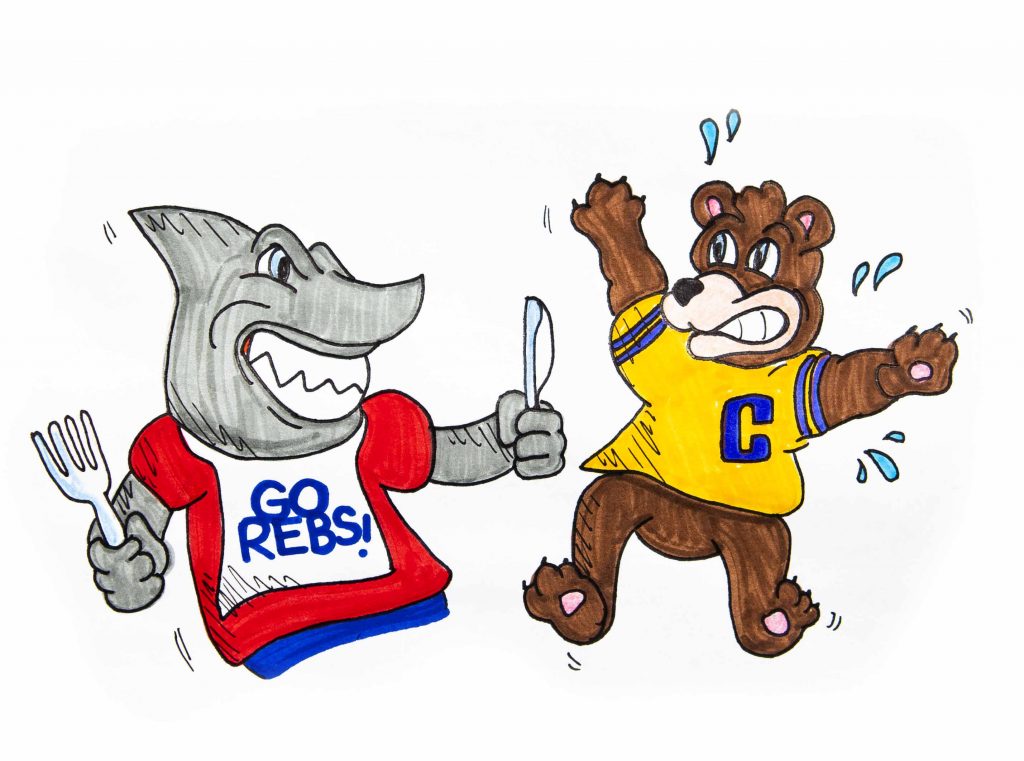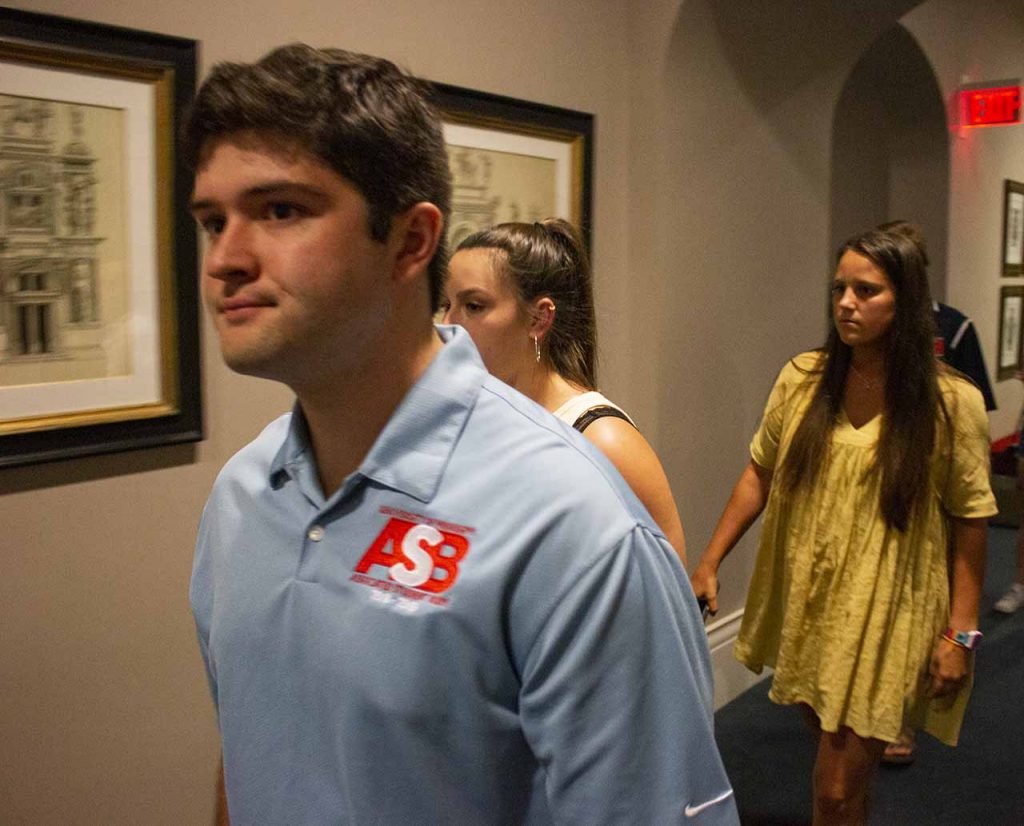Second gameday weekend summary: Rebels ran. Players performed. Fans cheered. Grovers groved.
As University Police Department officers backed away and music played in the distance, hundreds of freshmen bolted from a tunnel into Vaught-Hemingway Stadium. In navy blue “Rebel Run” T-shirts, they covered the field and then climbed their way into the student section. I was thrilled to be one of them.
Exhilarated and sweaty, my friends and I found seats and fanned ourselves to cool down. As we looked around, though, it seemed that even those who had not just sprinted a hundred yards were in a state of discontent. Lots of people — if they weren’t leaving — were attempting to stay cool by turning their heads from the sun, hiding under tents atop the stadium and spending $8 on bottomless water. The longer we stood, the more we realized that the dress code for this semester may not have been well thought out.
Everyone was sweating. Nearly all were dressed in navy. Most were elsewhere by halftime.
People in the Grove, meanwhile, were enjoying a second round of pop-up tents, ice-filled coolers, eloquently decorated cookies, portable restrooms, and colorful trash cans. Students who stayed there could have watched the game where a fan kept them cool and dry and the sun wasn’t beating down on their dark shirts.
As exciting as the game day atmosphere is, it would, without a doubt, be more enjoyable if the weather were not so stifling. Dressing in navy for a 3 p.m. game only made the situation worse. Saturday’s dark-hued stands exacerbated the already intense heat, unveiling true feelings about the color chosen for the day. Among conversations I overheard, several questions arose:
“Why are we wearing our darkest colors at the hottest game?”
“Why aren’t we wearing powder blue instead?”
“Can I wear this white shirt and just add navy accessories so I won’t be as hot?”
These remarks mirrored comments from the week before when game-goers complained about wearing red against Arkansas, a team whose colors are cardinal and white. The complaints from the past two weekends together display a need to be more intentional when selecting the game day dress code.
While the game time may not always be known and temperatures not always correctly forecasted, navy should never be a color of choice for a September home game. Opening up the first two home games of the season dressed in our primary colors is simply not worth the additional discomfort that probably contributes to a mass exodus from the student section halfway through the first quarter.
As in the case last week, we should not blend into the opposing team’s fans. Next week’s color choice of red for an 11 a.m. game against the blue and gold University of California appears to be a step in the right direction.
However, after Cal, we regress. Against the University of Alabama, fans will be expected to throw on red and meld with Bama’s red-hued crimson color. Later in our season, Texas A&M will be a similar circumstance. These recurrences further demonstrate our need to be more intentional with our dress code.
Mississippi State University—albeit an enemy— at least offers its fans an option of white for the first two home games and does not establish a dark-hued color until a home game later in its season on Nov. 16. They seem to be more considerate with their dress code.
I am not advocating to retract from a uniform game day color. I only ask that the dress code is thought out more thoroughly. There are a few simple rules of thumb that, when followed, will make uniting in dress code an enjoyable experience and possibly even boost participation. When getting the Ole Miss fan base to blend in with one another, don’t forget to make them stand out — don’t dress in the opposing team’s colors. Leave navy for October. And consider wearing white more than once in a season.
Keeping these measures in mind will surely result in a happier, more uniform and larger fanbase to rally behind the Rebels.
Lydia Johnsey is a freshman international studies major from Fayetteville, TN.
















